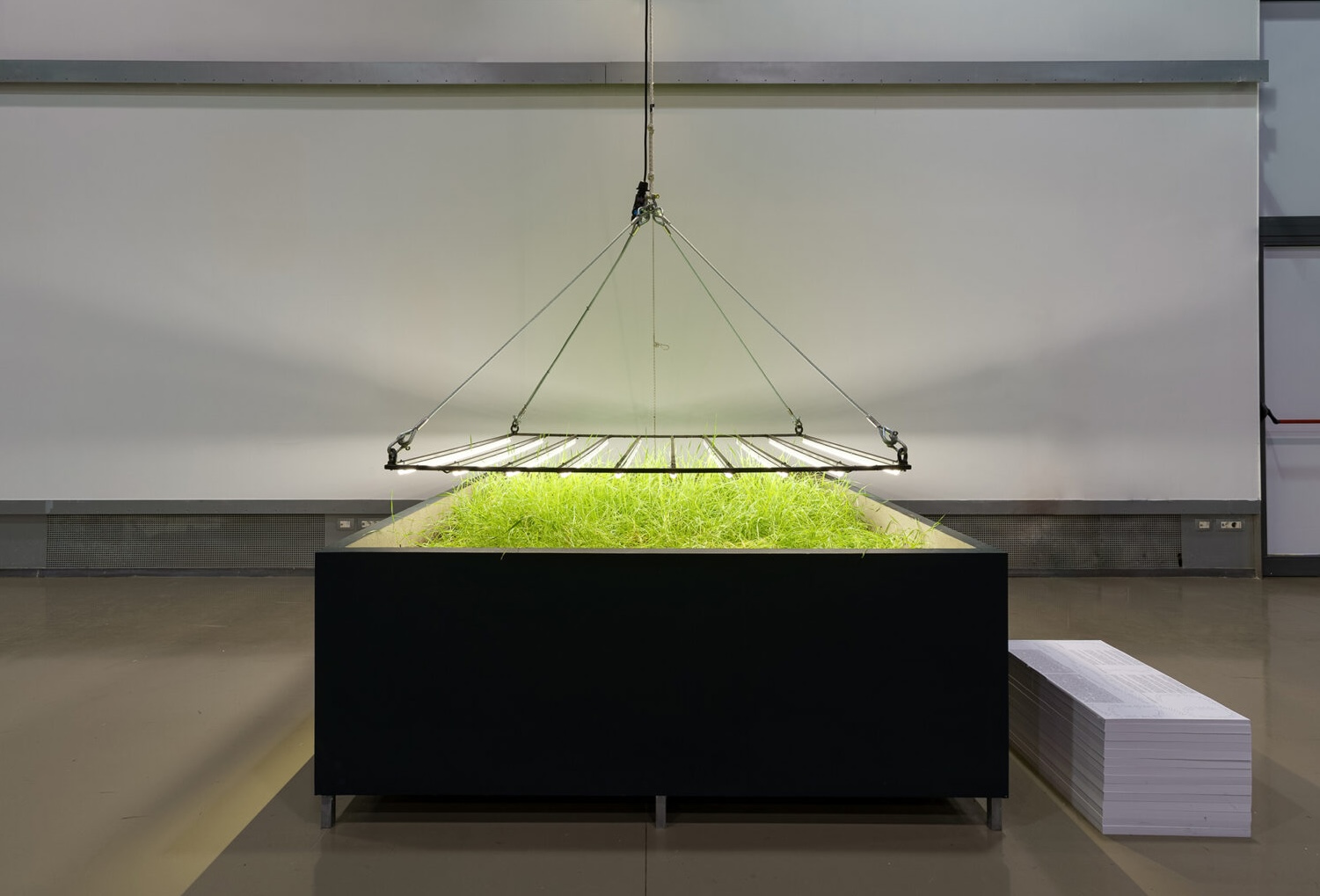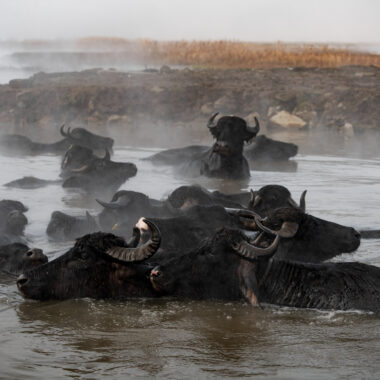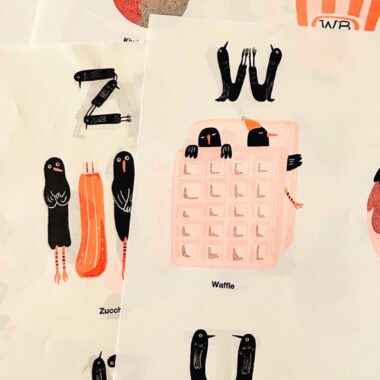Fabio Aranzulla and Luca Cinquemani, are an artistic duo based in Sicily calling themselves Aterraterra. Their interdisciplinary work intersects art and agricultural practices, questioning accepted narratives within agriculture and food cultures.
The Common Table: Coming from a sociology and art and agricultural sciences background respectively, could you tell us about how you both came to focus on the confluence of food and culture together in your artistic practice?
Aterraterra: When we started our practice in 2020, we also started farming together in a small community garden. The experience prompted us to analyse the narratives behind our growing practice and it taught us to observe.
Our goal became to question the possibility of an agriculture and food culture that is critical of forms of oppression and aware of its anthropocentrism. We conducted our first lines of artistic research on the possibilities of a multispecies collective, the relationship between food plants and the colonial past, and the apparently harmless but often problematic narratives around food.

One line of research we have focused on is foraging and the ever-shifting cultural limit of the concept of edibility. Some of our ongoing projects explore post-agricultural and post-linguistic perspectives and forms of radical edibility and cultivation in different climate change contexts.
The Common Table: Please expand upon these problematic narratives and why some of the plants we eat have a difficult heritage.
Aterraterra: The food plants we usually grow and eat are the result of thousands of years of human domestication and selection from wild species. Most of the vegetables we eat would not exist in the forms we know if they had not encountered humans along their evolutionary path. Therefore we can define agriculture as the over 10,000-year-old human-driven practice of genetically modelling photosynthetic organisms to provide food for human populations.
This very long relationship has not only radically shaped plant genetics but has also left traces of human history on cultivated plants at various levels. One of these traces is undoubtedly colonial history, which is reflected in plants in the form of genetics, displacements, human nominations and narratives.
We can define agriculture as the over 10,000-year-old human-driven practice of genetically modelling photosynthetic organisms to provide food for human populations
Two examples we have been working on in the Italian context are the Ethiopian red aubergine and “ancient grains” wheat. The Ethiopian red aubergine is known in Italy as Melanzana Rossa di Rotonda (Rotonda is a town in the Basilicata region) and is often narrated as an Italian speciality. It is in fact a variety of Solanum aethiopicum which arrived in southern Italy via soldiers returning from the first Italian colonial campaign in Ethiopia in the late 19th century.
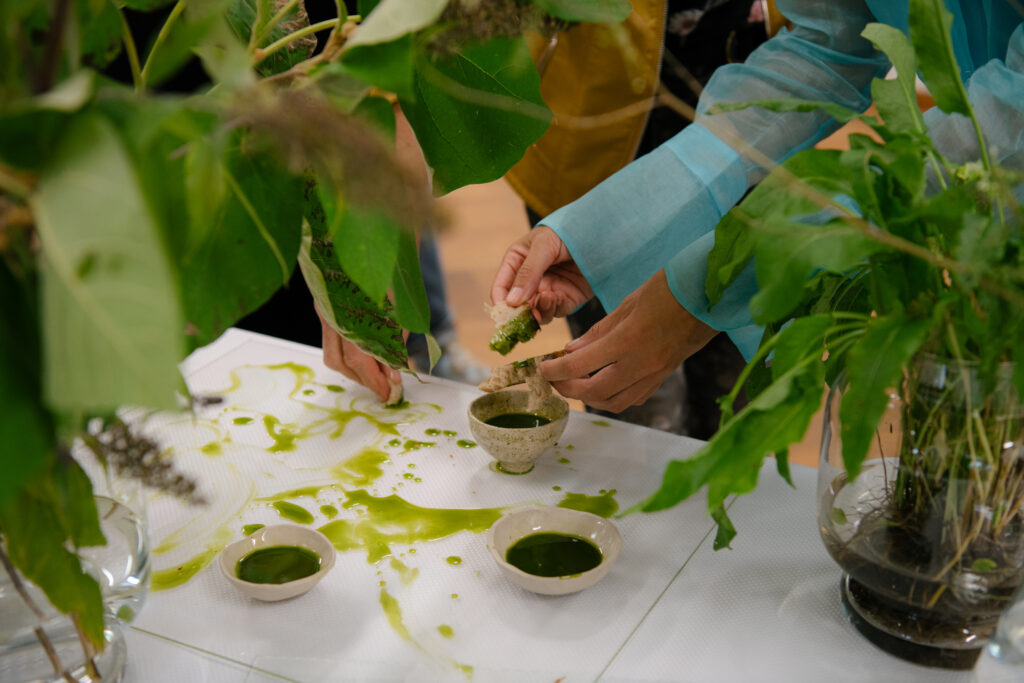
It is curious that in some Italian food narrations, this story is told only superficially and the aubergine is often accompanied by the adjective “exotic”. It should be noted that the colonial pasts of plants are not obvious, they must be sought out and excavated, because they are often denied, concealed and deformed. The attempt to Italianise and at the same time exoticise the Ethiopian red aubergine is an example of this and is perfectly in line with Italy’s relationship today with its colonial past: one that is never really addressed and resolved.
Another similar case is that of Italian “ancient grains” (grani antichi) wheat varieties. These are narrated as being more natural, more local, healthier and older than other varieties. Little is said about their history. During our research, we discovered that not only are many of them not “ancient” at all but also some of the most famous of them, such as the Senatore Cappelli variety, were created by geneticists during fascism, at the instigation of Mussolini, who wanted to achieve food self-sufficiency through the mass cultivation of these so-called sementi elette or “chosen seeds”.
The Common Table: So the romantic idea of “local” or “heritage” grains can be much more problematic or complex than many people realise?
Aterraterra: Some grains have a much more complex past than people believe. The history of these “ancient” wheat varieties created during fascism reveals two relationship levels. The first is the most obvious one, the fact that the food and agricultural policies ostensibly designed to increase production during the fascist regime of the time accelerated the human transformative pressure on these food plants.

The second brings us back to the basis of the agricultural relationship between humans and cultivated food plants. Far from being an equal relationship or, as some have suggested, a form of symbiosis or care, agriculture is a unidirectional form of command and domination over the lives of other species, determining their ways of existing on the planet.
Agriculture is a unidirectional form of command and domination over the lives of other species, determining their ways of existing on the planet.
We can consider the past of the “ancient” Italian cereals problematic, but it is a past in which these cereals had no decision-making capacity of their own. Despite themselves, they bear traces of the past of those same people who have linked their lives and conducted their politics with and through these plants.
If we look at the problem from this point of view, there are no fascist grains or grains with a problematic past, only grains that can have no other past than the one decided, narrated, or shaped by human beings. Being aware of this complex relationship, we realise that making them a symbol of this period is an oversimplification.
There are no fascist grains or grains with a problematic past, only grains that can have no other past than the one decided, narrated, or shaped by human beings.
At the same time, however, we can firmly oppose narratives that omit and distort the human past when talking about these plants. The narratives we hear today, which aim to describe the healthiness and naturalness of ancient grains without referring to the fascist moment of some of them, are a way of masking history. Telling the hidden history of fascism in all its complexity can be an interesting way of countering these narratives, catalysing reflection and discussion not only on the human fascist past but also on our extremely long relationship with food plants.
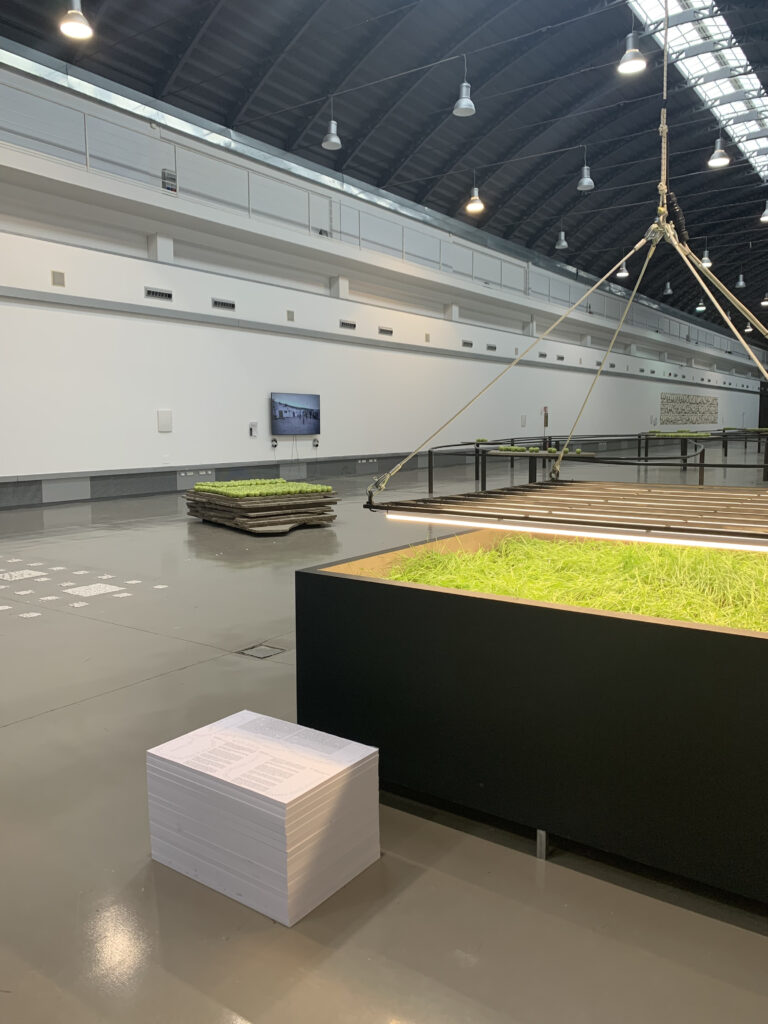
The Common Table: Are there many food plants that can be considered “everyday” for many but continue to have difficult or false narratives attached to them?
Aterraterra: Of course, many widely cultivated and consumed food plants have such narratives attached to them. The tomato, for example, is a plant at the centre of the narratives of Italian culinary culture and therefore a crucial part of the cultural construction of Italianness. The tomato is not only a plant that was brought to Europe and Italy by past colonial movements. Examining its cultivation in the present also reveals terrible conditions of exploitation of workers, especially of people of colour. Additionally, the demand for massive quantities of “Italian” tomatoes creates huge areas of monoculture causing pollution and the destruction of ecosystems.
The Common Table: How can these narratives be changed or corrected?
Aterraterra: One of the ways to counter and deconstruct these narratives is to make the underlying story visible. We try to do this work of dismantling and deconstruction through art. For example, a few years ago we were part of the exhibition Ordo naturalis – Ordo artificialis by Fondazione Merz in Palermo, and we worked on the narratives linked to ancient Italian wheat. The work, entitled “Someone Told Us a Story about Nature and Purity”, was a cultivation experiment that created a community of different Italian wheats in the exhibition space, mixing them and opening a process of uncontrolled hybridisation between them.
To put at risk this genetic heritage linked to fascism means to create the conditions to make it visible and to start a debate.
With this artwork, we tried to shift the focus from current narratives about ancient wheat to an artistic fiction in which these varieties were put in a state of losing the genetic imprint left by human history through a process of hybridisation not controlled by humans. To put at risk this genetic heritage linked to fascism means to create the conditions to make it visible and to start a debate.
The Common Table: Do you always combine your artistic practice with your research practice?
Aterraterra: For us, research and art are closely intertwined and originate in the practices of observation and cultivation. We always start by observing cultural and biological phenomena. For us, art is the propulsive phase of research, the one that pushes towards the most radical perspectives, stimulates reflection and deconstruction and is not afraid of disenchanting. Especially when the enchantment is an anthropocentric human narrative that doesn’t take into account the complexity and problematic aspects of our relationships with other forms of life.
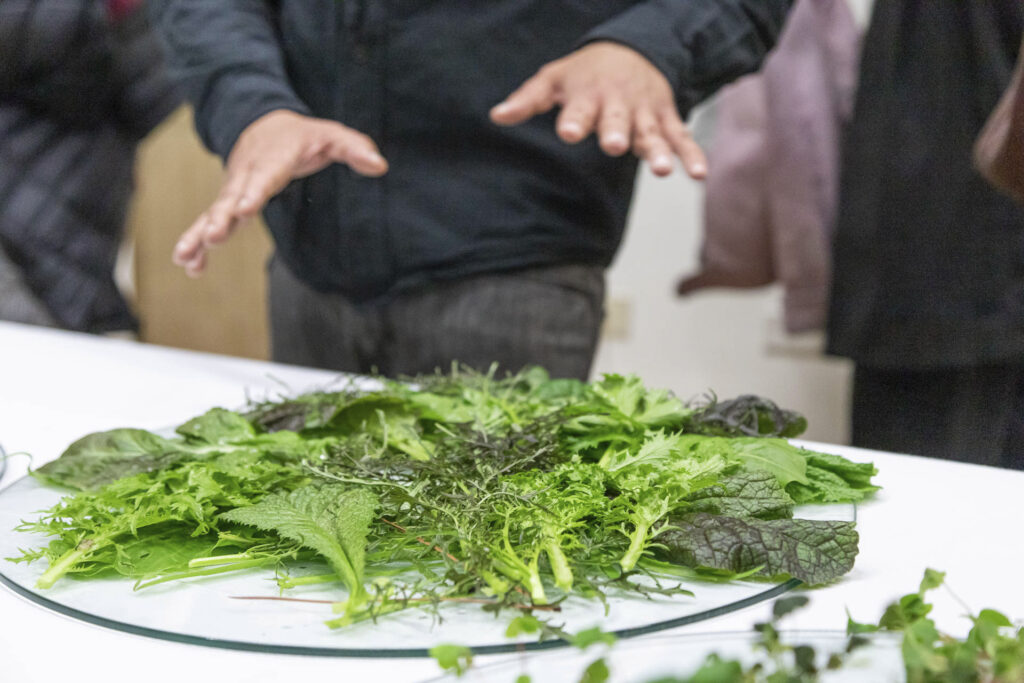
One of our ways of working is food performances and tasting sessions. Our tasting sessions are often an invitation to question and collectively rethink linguistic definitions and narratives around food plants through moments of tasting that propose new understandings of a place and new ways of relating to the forms of life that inhabit it. In terms of how we work within institutions and artistic spaces, it is always fundamental for us to consider these cultural entities as part of ecosystems before intervening and trying to reconstruct the relationships between the present life forms. An example of this is our ongoing project “The Edible Institute” at the Swiss Institute in Rome and another is our project “Connected Ecosystems. Post-Varietal Museum and Community” (Ecosistemi connessi. Museo e comunità post-varietali) at the Museo Civico di Castelbuono.
The Common Table: Let’s talk about taste. Can you tell us more about your exploration of cultural constructs around taste, particularly concerning the notion of the “exotic”?
Aterraterra: Taste is a fundamental element of our practice. The complex system that links a series of physical and chemical properties of food and the meanings and names that human societies give to them reflects not only the relationship with the life forms from which food is derived but also the agricultural organisation of those life forms and a whole series of narratives that tell the history of those societies.
We have recently been working on the concept of what is often described as “exotic taste” in the West. As one might expect, this signifier has a very heterogeneous set of different definitions and reflects an abundance of unreflected colonialism and racism. By focusing on this particular signifier, we imagined developing alternative, chemistry-based names for certain flavour complexes while consciously moving away from the use of the term “exotic.”
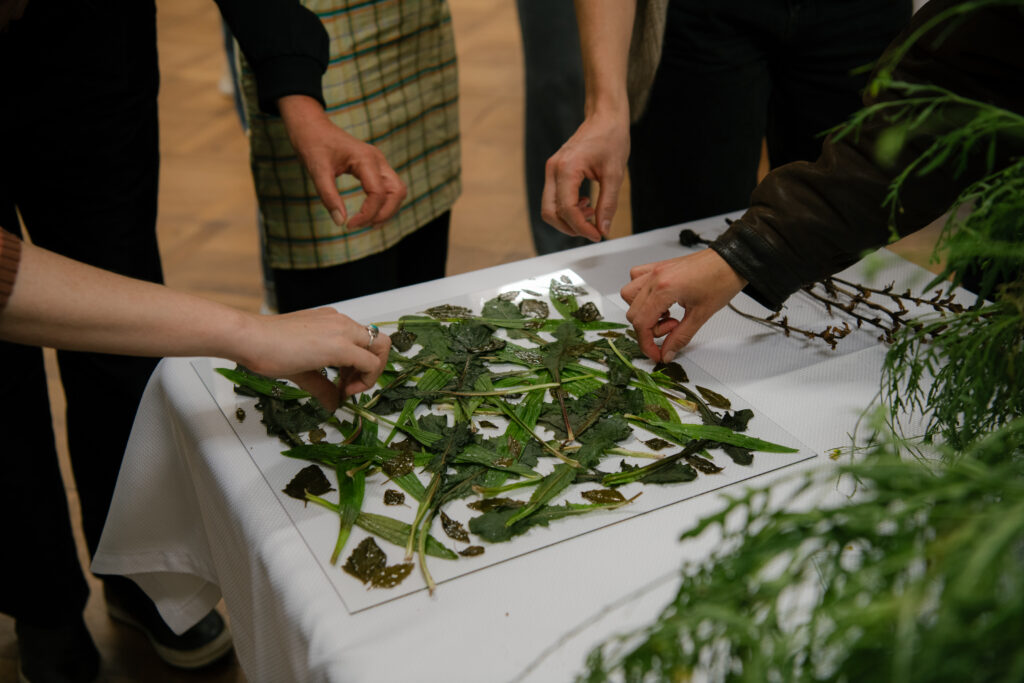
The Common Table: How does that relate to what is considered edible and what is not?
Aterraterra: The boundary between the edible and the inedible is constantly shifting. Edibility is a dynamic concept that changes spatially and historically. It is almost always a matter of narratives. What is edible – and therefore also what is toxic – is constantly redefined, often based on cultural constructs rather than chemical analysis.
What is edible – and therefore also what is toxic – is constantly redefined, often based on cultural constructs rather than chemical analysis.
Today we eat foods that elsewhere and at other times would have been considered inedible or toxic, and vice versa. In foraging, for example, there are many potentially edible plants but if we look at local traditions, such as those in Sicily, only a minimal proportion of edible wild plants are codified in recipes. Playing with this mobile boundary can help expand the areas of edibility not linked to agricultural production, or reshape our relationship with many plants – often considered invasive – that are often actually edible.

The Common Table: Do you believe post-industrial agriculture is possible on a planet of 8.2 billion people or is that the wrong question?
Aterraterra: Post-industrial agriculture appears unfeasible on a planet of 8.2 billion people. Yet, what is needed today is an intellectual push to explore what once seemed impossible. Industrial agriculture simplifies ecosystems, exploits plants, people, and other beings, degrades soils, and drives climate change. Moreover, the tabula rasa agro-industrial approach in monoculture mirrors a colonial mindset and the violent legacy of plantation systems. As artists, we want to envision radical perspectives and pose daring questions about the future – even when they seem unattainable.
As artists, we want to envision radical perspectives and pose daring questions about the future – even when they seem unattainable.
The Common Table: We have been thinking a lot lately about Audre Lorde’s expression “The master’s tools will never dismantle the master’s house” in the context of trying to shift from from an extractive, profit-motivated food system. Your investigative way of working across cultures, disciplines, narratives and time seems to be a growing approach, not just among designers and cultural workers. Do you have a vision of how institutional practices can and need to adapt to this way of working to escape or change the industrial system as it stands?
We agree with Audre Lorde’s statement. We cannot imagine transforming an industrial food system that is extractive, and profit-driven, and we would add – based on the management and exploitation of life forms – by using the same tools of said system. Often, even highly downscaled forms of production and consumption that seek to distance themselves from this system reproduce its ideas, just on a smaller scale. Real change will only be possible for individuals and institutions if we radically change how we analyse our trophic relationship with other living and non-living beings, especially with cultivated photosynthetic plants. By acknowledging that industrial agriculture – in its Western manifestation and its offshoots – bears striking similarities to the practices of colonisation and the violence of invasion, we may finally be ready, although perhaps belatedly, to reimagine our coexistence and survival with the living environment from a radically new perspective.
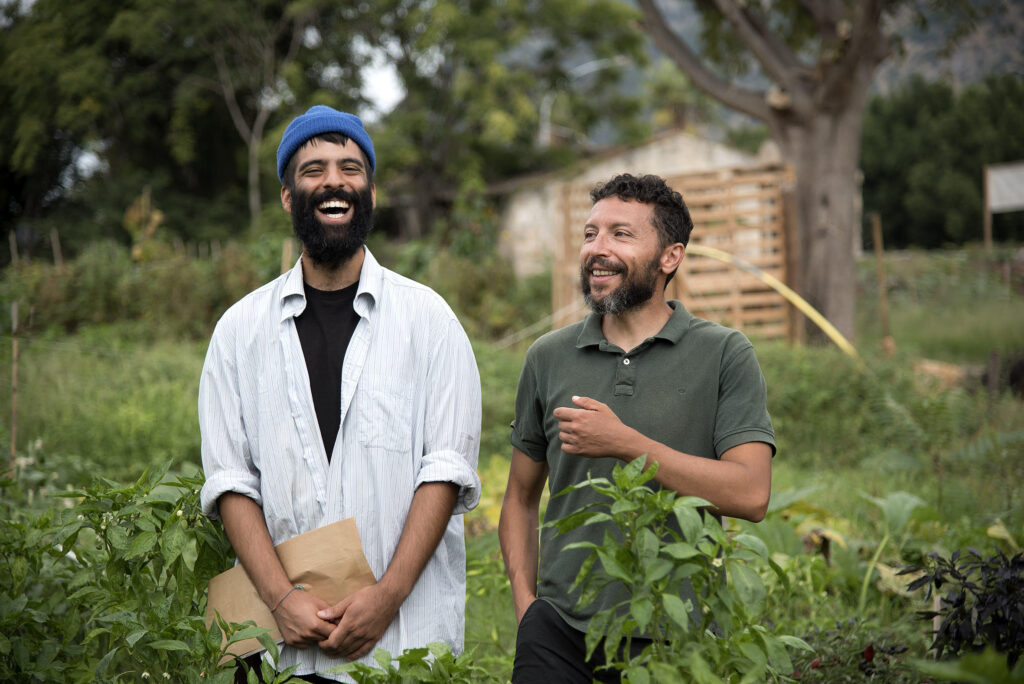
Founded in Palermo in 2020 by Fabio Aranzulla and Luca Cinquemani, Aterraterra is an artistic duo that works in a multidisciplinary way intersecting artistic, agricultural and activist practices Aterraterra’s research questions the possibility of an agriculture and food culture that is critical of forms of oppression and aware of its anthropocentrism. Fabio comes from a Sicilian family but grew up in Germany. He studied history of art and sociology before studying fine art and photography in Leipzig and moved to Palermo in 2020. Luca first studied agricultural sciences, before completing a doctorate in cultural studies.
Title image: “Someone Told Us a Story about Nature and Purity” installation view, Aterraterra in the exhibition Ordo naturalis – Ordo artificialis by Fondazione Merz in Palermo, 2022. Photo © Filippo Nicoletti, courtesy Aterraterra.
